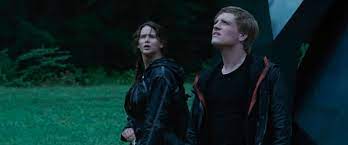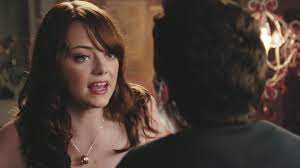Theoretical Framework
Tuesday 27th September 2022
LO: To apply the theoretical framework to media texts.
- Media Language
- Camerawork (Cinematography)
- Soundtrack
- Mise-en-scene
- Editing
- Media Institutions
- Media Audiences
- Media Representation
Media Language
Camerawork - Shot type, angle and movement
Establishing Shot:
An establishing shot is often shown at the start of a scene. It shows the time of day, where the scene is happening or even the era/timeframe.
Wide Shot:
A wide shot is used to show the surroundings and shows the relationship of the subject and their location. It can show how big an area is.
Mid shot:
A mid shot is where you can see a person from above the waist and slightly above their head showing their feelings and their location.
Medium Close Up:
A medium close up is from the chest up and focuses on the character rather than the surroundings.
Close Up:
A close up focuses on the characters face showing their feelings and facial expressions.
Extreme Close Up:
An extreme close up is a close up of a particular part of the characters body showing it in detail.
An over the shoulder shot is when it is looking behind a person to another.
- Music
- Sound Effects
- Dialogue
- Voiceover
Diegetic Sound:
Sounds you can hear if you were in the scene.
Non Diegetic Sound:
Sounds you can hear but are added later and therefore the actors can't hear. If you were in the scenes you won't be able to hear these sounds.
Thursday 29th September 2022
Mise-en-scene:
The arrangement of the scenery, props, etc. (On the stage of a theatrical production or on the set of a film.)
Includes everything that can be see in a frame:
- Costume
- Props
- Setting
- Hair and Make Up
- Lighting
- Actor Positioning
- Body Language and Facial Expression
- The person in the middle looks powerful and very serious and determined which could suggest they are possibly a main character
- The person behind looks nervous and worried
- Mysterious person in the background by the fencing
- The background is a night sky which suggest something mysterious could happen in the night
- There is a barren looking area with fencing and a restricted area sign
- The bikes and their clothes could show that the program is set in the past
- He is holding a bag which connotes he could be going somewhere or leaving for like a business trip
- He is wearing quite dark clothes and he is smoking a cigarette which connotes he could be suspicious
- He is placed in the middle of the frame which could connote he is quite an important character in the film unlike some of the others in the background
- He's at what seems to be a carnival or a fun fair at night which could foreshadow the setting of the film
- It doesn't look like it is set in the modern day and so it could be sometime in the past, he is wearing old fashioned sort of clothes and his bag
Includes all the Post Production work on a moving image:
- Transitions
- Pace and Speed of Cuts
- CGI
- Green Screen
- Graphics
When you go straight from one scene to another
Jump Cut:
It cuts out pieces to make one scene almost jump to show like a time laps
Parallel Editing:
When they cut between two different things showing two sides to the story
Cutaway:
When you cut to shots of the environment around the characters (extra information about the scene)
Montage:
When there are scenes put together to show the character working towards there goal over a long time
Match Cut:
Tracking: When they follow the characters movements
Editing in Sherlock:
Cutaway shots
Straight cut
Tuesday 4th October 2022











Comments
Post a Comment